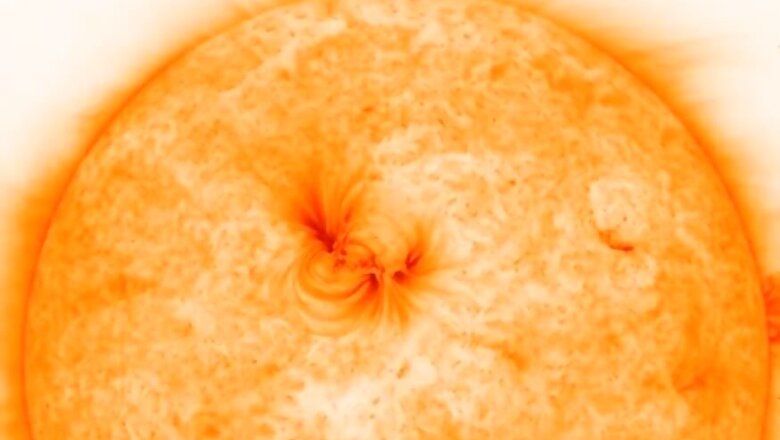
views
For the first time ever, scientists have been able to take a look at magnetic plasma threads on the violent solar surface. These threads, which are up to 500 kilometres wide, are part of what constitutes the devastating solar storms that also give us the beautiful aurora borealis. The up close imagery has been made possible by the High Resolution Coronal Imager (Hi-C), a sub-orbital space telescope tasked specifically with taking ultra high definition photographs of the solar surface.
The image has revealed incredibly fine magnetic threads on the violently turbulent solar surface, which are filled with plasma flowing through them at a million degrees heat. In essence, this is the first time that scientists on earth have managed to get a glimpse of a granular element of solar storms, which will eventually help mankind better understand the behaviour and composition of the highly magnetised solar atmosphere, and find other elements that it has.
These massive plasma threads also fill in the gap, quite literally, of what were so far believed to be dark and empty sun spots. Instead, the gaps are actually the plasma threads, which are almost 500km in width, and have hot, electrified gases flowing through them. However, while we have now managed to observe the threads, their physical mechanism, as well as how and why they are formed, remains completely unknown till now. Scientists leading the Hi-C solar observation project believe that this knowledge will help mankind understand exactly how and why solar flares are formed, and how may this affect life on Earth.
This, as one would expect, is only the proverbial tip of potential discoveries. Amy Winebarger, principal investigator of the Hi-C telescope at the NASA Marshall Spaceflight Center, said in a statement, "Along with ongoing missions such as Probe and SolO, this fleet of space-based instruments in the near future will reveal the Sun’s dynamic outer layer in a completely new light." Led by Prof. Robert Walsh, a professor of solar physics at the University of Central Lancashire, Hi-C's task is to continue capturing further ultra high definition photographs of the solar surface.
When launched in 2012, the NASA-MSFC laboratories had claimed that Hi-C carries the finest pieces of optics ever created for solar astrophysics, hence explaining just how powerful the telescope is. Hi-C can pick out objects that are just 70km wide on the solar surface, or just 0.01 percent of the Sun's size. Researchers are now relying on more data from Hi-C, along with missions such as the SunRISE (scheduled to launch in 2023), to learn about stellar behaviour, in a bid to better understand the chemical and physical properties of a star, and the effect these may have on mankind.


















Comments
0 comment